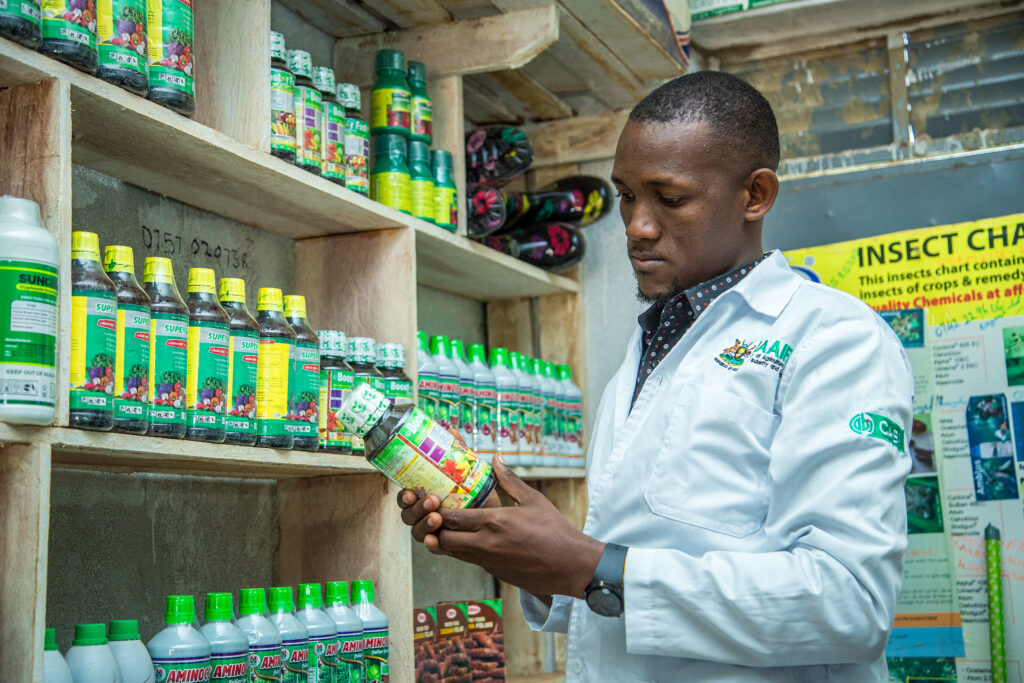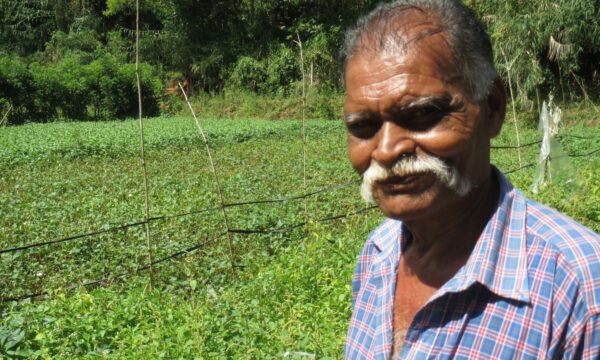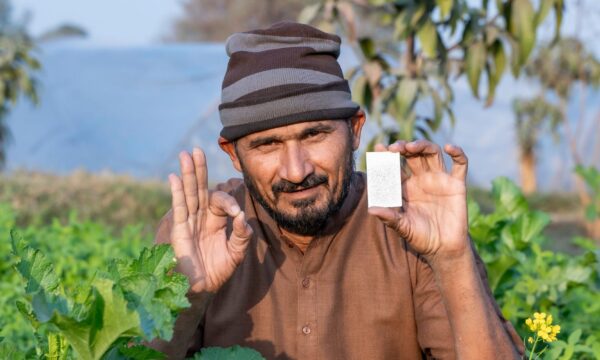Pesticides are a widely used pest management option. However, if applied incorrectly, they can pose serious risks to human health, ecosystems, and food safety. From farm workers and consumers to pollinators and waterways, the impacts of unsafe pesticide use can be far-reaching.
We spoke with CABI’s Melanie Bateman and Anna Wood about the risks associated with pesticide use. Anna also discusses the new CABI Academy course, Reducing Pesticide Risk, which supports the PlantwisePlus programme’s goal of raising awareness of pesticide risk and promoting lower-risk plant protection products.
Why is reducing pesticide risk a key priority for the PlantwisePlus programme?
MB: Studies highlight that global demand for pesticides is growing, particularly in low and lower-middle-income countries. This is negatively impacting food systems, human health and the environment. Many highly hazardous pesticides are still widely used in low and lower-middle-income countries, with some reporting that almost 70% of all pesticides allowed for use were highly hazardous pesticides.
Pesticide risk reduction is a key priority for the PlantwisePlus programme because:
- Farmers will be exposed to lower levels of pesticide, and experience fewer health problems and acute poisonings resulting in improved health
- We can ensure delivery of safer produce into food systems
- Fewer rejections will be experienced through exceeding maximum residue levels when trading internationally leading to an increase in net income for farmers.
- We will see benefits to biodiversity, soil and aquatic health, and lower levels of toxic chemicals circulating in the environment.
What are the main risks associated with pesticide use?
MB: Use of any pesticide comes with some risk, but this risk can be reduced when the user selects the least hazardous pesticide, follows the safe use instructions on the product label, and wears the necessary protective equipment.
Farmers are the main users of pesticides and risk being exposed when mixing or applying pesticide products. Farmers can also be exposed to pesticide during the application process if the spray comes into contact with their skin and eyes or is inhaled.
Exposure can also occur if someone enters a sprayed field or other treated space, such as a greenhouse, before the safe re-entry period for the specific product. If instructions for safe pesticide use are not followed, then there is a risk that harmful levels of pesticide will remain on the crop at harvest, which can have an impact on consumer health.
When pesticides are used inappropriately, they can enter the environment through run-off from crops, spray drift and leakage from damaged sprayers or discarded containers. This pesticide then spreads into the soil or waterways where it can harm or kill wildlife, including beneficial insects, birds, mammals and fish. Drinking water used by humans can also become contaminated.
It is therefore extremely important that farmers follow product label information on how to use the pesticide safely and know how to protect themselves with the appropriate personal protective equipment.

How does PlantwisePlus help farmers and agricultural advisors reduce these risks?
MB: PlantwisePlus works with partners to identify and promote locally relevant measures to reduce reliance on pesticides (e.g. through integrated pest management), select plant protection products of the lowest risks, and mitigate risks associated with pesticides when they are used.
What does the new CABI Academy course, Reducing Pesticide Risk, cover, and what are its main objectives?
AN: This new Reducing Pesticide Risk course provides information about pesticide risk using simple terminology, reinforced with diagrams, case study examples and videos to explain the key points. Each section introduces key concepts in an easy-to-understand way, with end-of-section quizzes to help participants confirm their knowledge. By the end of the course, participants will understand the concept of risk, how risk relates to pesticides, and how to reduce that risk.
What key topics or skills are learners equipped with in relation to safe and effective pest management?
AN: The course highlights the main groups at risk of exposure to pesticides, namely:
- Farmers and farmworkers who use them to protect their crops
- Agro-input dealers who store and handle pesticide containers in their shops
- Consumers of produce grown on farms using pesticides
- A wide range of non-target animals and plants in the environment which are exposed when pesticides are used inappropriately on farms.
The course introduces various ways to reduce the risk to each of these groups. These include correct pest identification to confirm whether a pesticide is needed in the first place, or to ensure that the most suitable pesticide for the target pest is chosen. It also highlights the importance of finding information on and following applicable pesticide laws and regulations in the participants’ own countries.
How does this course support better decision-making?
AN: The course starts by defining pesticide risk: what is risk, who is at risk and how. It then covers pesticide classification, including what defines a highly hazardous pesticide and the risks associated with them.
Two main areas of pesticide risk are then looked at in detail. First, risk to human health. Second, risk to environmental health.
The course also covers the importance of making a correct pest diagnosis to select the most suitable and least harmful product, and the implications of using an inappropriate one. Learners also receive practical advice on assessing and reducing pesticide risk to humans and the environment. This includes understanding the information on labels, such as hazard symbols, colour coding, and safety pictograms.
Throughout, participants apply information from their own countries on pesticide availability, regulation, and labelling, and complete a workbook activity that guides them through a step-by-step process for comparing pesticides to identify the lowest-risk option.

How does the course align with and support the broader goals of the PlantwisePlus programme?
MB: The PlantwisePlus programme aims to empower smallholder farmers to manage evolving plant health threats, increase their incomes, improve food security and safety, and reduce biodiversity loss. Pesticides can negatively impact food safety and biodiversity.
This course contributes to the broader goals of the PlantwisePlus programme by raising awareness on pesticide risks and how to mitigate them as well as effective and affordable lower-risk alternatives to hazardous pesticides.
Digital tools and eLearning, such as CABI Academy, facilitate the delivery of timely information, enabling remote training and efficiently spreading best practices and innovations. The PlantwisePlus digital tools support agricultural extension workers, private-sector advisors, plant protection officers, farmers, researchers, and students to adopt safe and effective agricultural practices.
Find out more
The Reducing Pesticide Risk course is a free online, flexible course from CABI Academy.
PlantwisePlus gratefully acknowledges the financial support of the Directorate-General for International Cooperation, Netherlands (DGIS); European Commission Directorate General for International Partnerships (INTPA); UK International Development from the UK government; and the Swiss Agency for Development and Cooperation (SDC).
Related News & Blogs
PlantwisePlus: Growing knowledge, skills and resilience across Vietnam
Across Vietnam’s rice paddies, coffee farms, and pepper plantations, CABI, in partnership with the Vietnam Academy of Agricultural Sciences (VAAS), is helping farmers protect their crops through the PlantwisePlus programme. In Vietnam, the programme su…
28 October 2025




